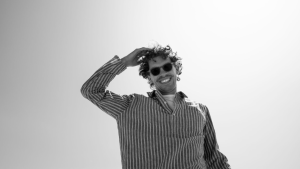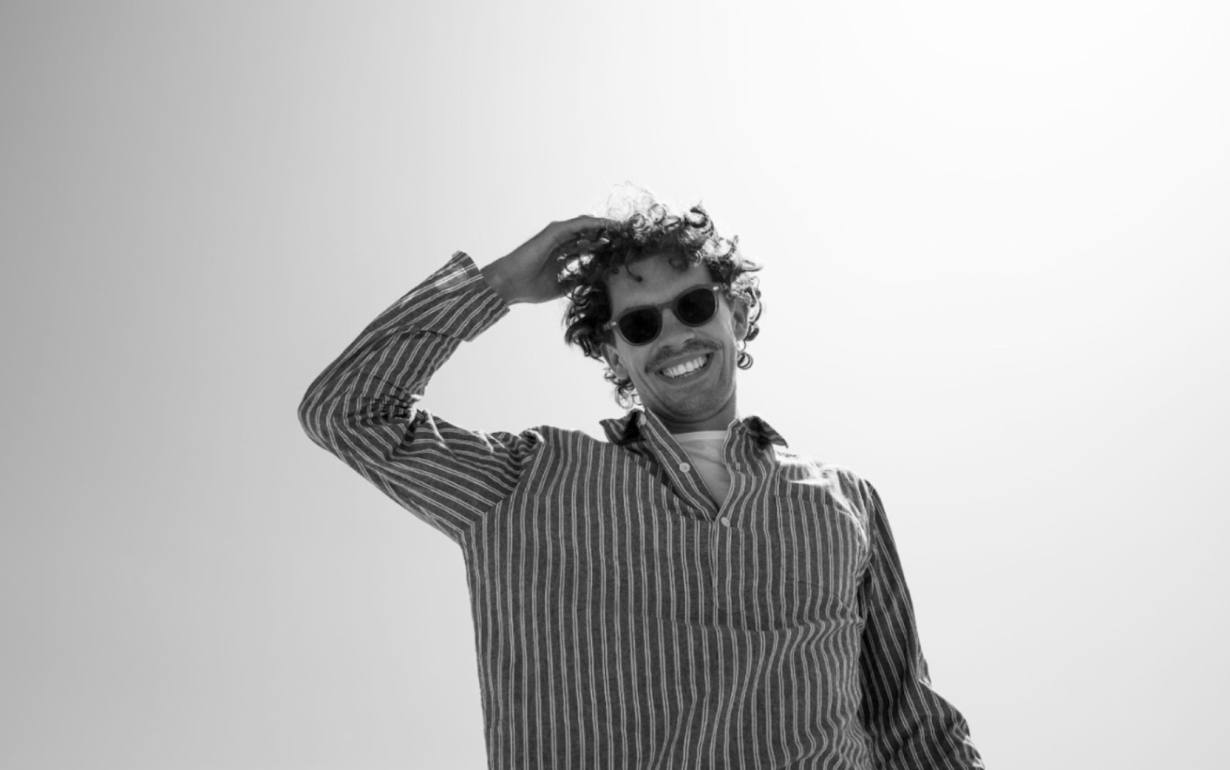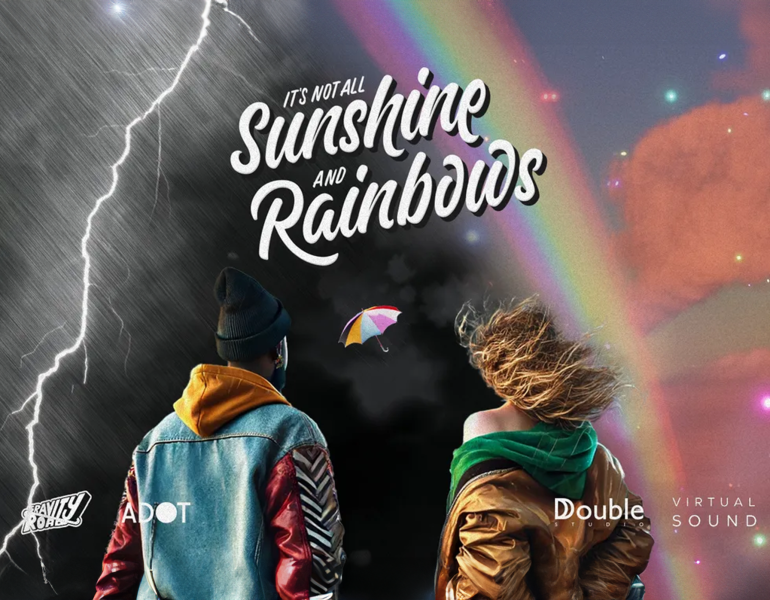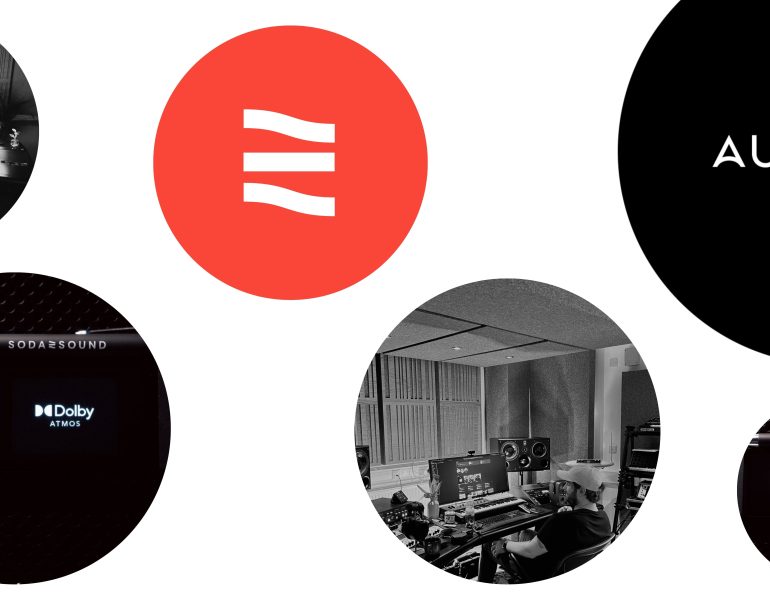Ted White on the Joys of Collaboration
The co-founder of Soundnest on the influence of Jon Hopkins, his love of watches and a standout project with Apple for Earth Day

Ted White is the co-founder of Soundnest, a boutique audio production studio that has worked with some of the world’s leading brands, including Apple, Mercedes, Samsung, and the BBC. Soundnest specialises in bespoke music, sound design, and immersive mixing across a variety of industries, including TV, cinema, music, advertising, and gaming.
Ted and his dedicated team are passionate about what they do, bringing a blend of creativity and technical expertise to every project and always focusing on delivering something unique and impactful.
LBB> When you’re working on a new brief or project, what’s your typical starting point? How do you break it down and how do you like to generate your ideas or response?
Ted> When starting a new project, I always gather as much insight from the client as possible. This includes understanding their vision, identifying key concepts, and finding out what excites them about the project. Whenever possible, we aim to get involved early in the process to develop a clear sense of the client’s goals and how our audio can elevate and express their story in the most impactful way, while also managing expectations.
From there, I dive into creating a rough sketch of sounds and ideas. My synthesisers are always on and plugged in ready to go so whenever I have an idea I can act on it immediately. I refine the work step by step, testing ideas, making changes, and repeating until it feels just right. This approach allows for a dynamic, creative process that stays aligned with the client’s vision while keeping the energy and momentum high.
LBB> Music and sound are in some ways the most collaborative and interactive forms of creativity – what are your thoughts on this? Do you prefer to work solo or with a gang – and what are some of your most memorable professional collaborations?
Ted> Love this question!
At Soundnest, we thrive on collaboration. I usually begin by sketching out the initial ideas and creating the backbone of the music.
From there, I pass it on to the team, where they add their touches and opinions. When we’re working on music and sound design for the same project, one of the team members will often start laying down a rough sound design bed while I focus on the music.
This parallel process ensures that both the sound design and music work seamlessly together, allowing us to create richer, more interwoven moments that engage the listener.
LBB> What’s the most satisfying part of your job and why?
Ted> The finishing touches for sure. Seeing the final product come together. Sitting in the studio with the client and seeing and hearing the music, sound design, foley and VO all in place and the vision of the project fully come together.
LBB> As the advertising industry changes, how do you think the role of music and sound is changing with it?
Ted> Music and sound design have always had to adapt to the ever-changing advertising industry, evolving with trends, technologies, and constraints like budgets. For instance, platforms like TikTok have introduced a wave of unique music trends, and clients frequently ask us to deliver work that aligns with or reflects these. This has significantly increased the need for adaptability, requiring us to compose in a wide range of genres and styles at a moment’s notice.
With listeners now exposed to an overwhelming amount of digital advertising media, the role of the sound designer/ composer has become more challenging than ever. We not only have to compete with this constant stream of content but also find ways to break through the noise and capture attention in meaningful, memorable ways.
LBB> Who are your musical or audio heroes and why?
Ted> Musically, I’ve always admired David Bowie and Radiohead for their innovation and ability to push boundaries. Bowie was a master of reinvention, constantly evolving his sound and persona while staying ahead of his time. His fearless creativity and ability to connect emotionally with audiences across decades is something I deeply admire.
Similarly, Radiohead inspires me with their experimental approach to music and sound design. They have an incredible ability to blend emotion with technical brilliance, creating immersive, otherworldly experiences.
LBB> And when it comes to your particular field, whether sound design or composing, are there any particular ideas or pioneers that you go back to frequently or who really influence your thinking about the work you do?
Ted> When it comes to sound design and composition, Jon Hopkins is a significant influence on my approach.
His ability to blend electronic music with organic sound design is something I find incredibly inspiring. He’s a master of creating immersive soundscapes that feel both emotionally rich and sonically intricate. His work, like ‘Immunity’ and ‘Singularity’, blends deep textures with subtle details, and it’s something I often return to for inspiration.
What I admire most about his work is how he manages to create atmospheric, almost cinematic pieces that still maintain an organic feel. He also has a unique approach to rhythm and space, using unconventional sound sources and processes to create something fresh.
His work encourages me to experiment more and think outside the box when it comes to sound design, helping me to push the boundaries of my own creative process.
LBB> When you’re working on something that isn’t directly sound design or music, are you the sort of person who needs music and noise in the background or is that completely distracting to you? What are your thoughts on ‘background’ sound and music as you work?
Ted> I have a record player in my main writing room so usually put a record on whilst doing emails, I find it also a good way to monitor time too as when side A finishes I know roughly speaking how long I’ve been at an email! Usually, it’s something ambient so I can still think, otherwise I also do tend to put on ocean or rain sounds as I find that helps me focus too.
LBB> I guess the quality of the listening experience and the context that audiences listen to music/sound in has changed over the years. There’s the switch from analogue to digital and now we seem to be divided between bad-ass surround-sound immersive experiences and on-the-go, low quality sound – how does that factor into how you approach your work?
Ted> Context matters because different spaces and platforms require different considerations. We always reference our music and sound design on multiple speakers and in different rooms from phone speakers, radio style speakers to Hi-Fi. This is to make sure we are hitting the balance of wherever the listener is digesting the music.
The quality aspect is especially interesting. Technology has advanced to the point where many people can now listen to music on high-quality devices, which means the gap between studio sound and what’s streamed at home has narrowed significantly. It’s not perfect, but listeners can experience something much closer to what we create in the studio. That accessibility has raised the bar for how we approach production quality.
At the same time, there’s still a real craving for nostalgia and simplicity. Some people prefer analogue formats like vinyl or older digital music players. I saw someone recently on the tube with an early generation iPod. I think these options offer a focused, distraction-free way to listen—no endless playlists, no notifications, no pop-ups.
In a world that’s already so hectic, I think listeners value carving out a calm, compartmentalised space to really connect with music. On a phone, for instance, you’re constantly interrupted by messages or alerts that pull you out of the moment. Devices like record players or dedicated music players let people focus entirely on the sound, and that simplicity is something we’re mindful of when creating music.
LBB> On a typical day, what does your ‘listening diet’ look like?
Ted> I have over the years learnt what times work best for me when to do my critical listening as I am constantly having to review mixes, give feedback on tracks, review music searches, go through our internal music catalogues latest uploads.
I tend to do my critical listening early in the morning around 6:30AM when I have no distractions and can solely just listen. Of course this is not to say that I will have to listen periodically throughout the day but most my heavier duty note taking and reviewing always happens early in the morning.
I usually end the day without fail in an ambient music vibe whether that be a curated playlist or putting on a record like Jon Hopkins ‘Music For Psychedelic Therapy’ (which sounds truly incredible in Atmos I must add!)
LBB> Do you have a collection of music/sounds and what shape does it take ?
Ted> I am a bit of a hoarder of things, I collect records, I collect Field recordings, I collect CDS, I buy music on Bandcamp, Apple Music you name it.
I am known for having a embarrassingly eclectic music collection. Most notably deciding to leave my clothes when in Brazil to have more room in my suitcase for Bossanova Records.
If I download a record on Apple Music that I listen to more than a few times I tend to go out and buy it on vinyl or CD. I just let the tactile quality of collecting music. I enjoy the process for sure.
LBB> Outside of the music and sound world, what sort of art or topics really excite you and do you ever relate that back to music?
Ted> I love art and watches (horology) I think there is something amazing about a mechanical watch and the stories it can tell and the sheer amount of components and technically that goes into it. I also find the tick tick ticking quite relaxing.
LBB> Let’s talk travel! It’s often cited as one of the most creatively inspiring things you can do – I’d love to know what are the most exciting or inspiring experiences you’ve had when it comes to sound and music on your travels?
Ted> Travel has always been a huge part of my life. I’ve never been able to stay in one place for too long, and I feel incredibly fortunate that my work allows me to travel frequently.
One standout experience was a project we did with Apple for Earth Day. The concept we pitched was an album created from recordings made across all seven continents. It was an unforgettable journey, capturing sounds from around the world—quite literally! My fondest memory is from the Osa Peninsula in Costa Rica, recording the dawn chorus during a dramatic thunderstorm. That recording still brings me s, and I often play it when I want to unwind but don’t want complete silence.
LBB> As we age, our ears change physically and our tastes evolve too, and life changes mean we don’t get to engage in our passions in the same intensity as in our youth – how has your relationship with sound and music changed over the years?
Ted> My relationship with sound and music has grown and evolved over the years. Being dyslexic, I found school academically challenging, but music became a vital outlet for me—a way to express myself and discover creativity beyond the classroom. Music lessons helped me find confidence and purpose that academics didn’t offer.
Now, I’ve made a conscious effort to keep that passion alive alongside my work, which includes mixing, mastering, sound design, and Atmos mixing. I try to carve out time after work to write music just for myself or experiment with synths. It’s a space where I can reconnect with the pure joy of creating, and it continues to inspire me.
Whether it’s through record shopping when I visit new cities or exploring local music scenes. It’s a way to stay inspired and maintain a deep personal connection to sound while continuing to grow creatively.
 Article
Article


